Disclosure: This article contains affiliate links. We may earn a commission from purchases at no extra cost to you, which helps our travel content.
The first time I visited Lisbon, my calves staged a full-on rebellion by day two. As a Colorado native, I thought I understood hills, but Lisbon's seven infamous inclines are like the final boss battle in a game you thought you'd mastered. What I quickly discovered (after several breathless climbs) was that the Portuguese capital has developed an intricate transportation network specifically designed to conquer these slopes. From the iconic yellow trams that could have been plucked straight from a vintage postcard to the hidden elevators tucked between ancient buildings, Lisbon offers budget travelers an ingenious way to explore without exhaustion. Whether you're planning a weekend getaway or using Lisbon as your home base for Portuguese adventures, mastering this unique transit system isn't just practical—it's an essential part of experiencing the city like a local.
Understanding Lisbon's Unique Transit Network
Before diving into the specifics, let's get our bearings. Lisbon's public transportation system feels like it was designed by someone who appreciates both efficiency and whimsy—a bit like crafting the perfect game level that balances challenge with delight.
The network consists of four main components:
- Trams (Elétricos): The iconic yellow streetcars that navigate narrow streets and steep inclines
- Funiculars (Ascensores): Short-distance, steep-grade trams that function like diagonal elevators
- Elevators (Elevadores): Vertical lifts connecting different elevation points in the city
- Metro and Buses: The conventional transit system that complements the hill-conquering options
What makes this system brilliant is how these pieces work together, creating a transportation web that can get you virtually anywhere while minimizing the quad-burning climbs. The best way to access all these options is with the Viva Viagem card—a reloadable transit card that works across the entire network.
Before my trip, I downloaded the Citymapper app to my phone, which proved invaluable for navigating the sometimes confusing connections between different transit types. Unlike Google Maps, it actually understands how the funiculars and elevators connect neighborhoods, saving me countless steps.

💡 Pro Tips
- Purchase a 24-hour unlimited Viva Viagem pass (€6.60) if you plan to make more than 3-4 trips in a day
- Download an offline map of Lisbon before your trip as some elevators and funiculars are hard to locate
- The Viva Viagem card itself costs €0.50, so keep and reuse it throughout your stay
The Legendary Tram 28: Tips for Avoiding Tourist Traps
Let's talk about Tram 28—the most famous transit line in Lisbon and possibly all of Portugal. This vintage yellow streetcar winds through the most picturesque neighborhoods, from Graça to Estrela, passing by major attractions like the Sé Cathedral and the viewpoints of Portas do Sol. It's essentially a €3 sightseeing tour if you can actually get on it.
And therein lies the challenge. Tram 28 has become such a victim of its own Instagram fame that during peak hours, the queues at popular stops can stretch longer than a loading screen on dial-up internet. After two frustrating attempts to board at the Martim Moniz terminal (the starting point), I discovered a game-changing strategy.
Instead of joining the masses at the beginning or end of the line, I walked uphill (I know, I know—but bear with me) to the Campo Ourique neighborhood and caught the tram at the Prazeres stop. Not only did I board immediately, but I scored a window seat for the entire journey! The trick is to ride it backwards through the route when everyone else is going the opposite direction.
While the tram is charming, it can get uncomfortably crowded. I always keep my anti-theft crossbody bag close to my body, as pickpockets are known to target distracted tourists on the packed trams. The slash-proof straps and RFID-blocking pockets have given me peace of mind on public transportation throughout my travels.
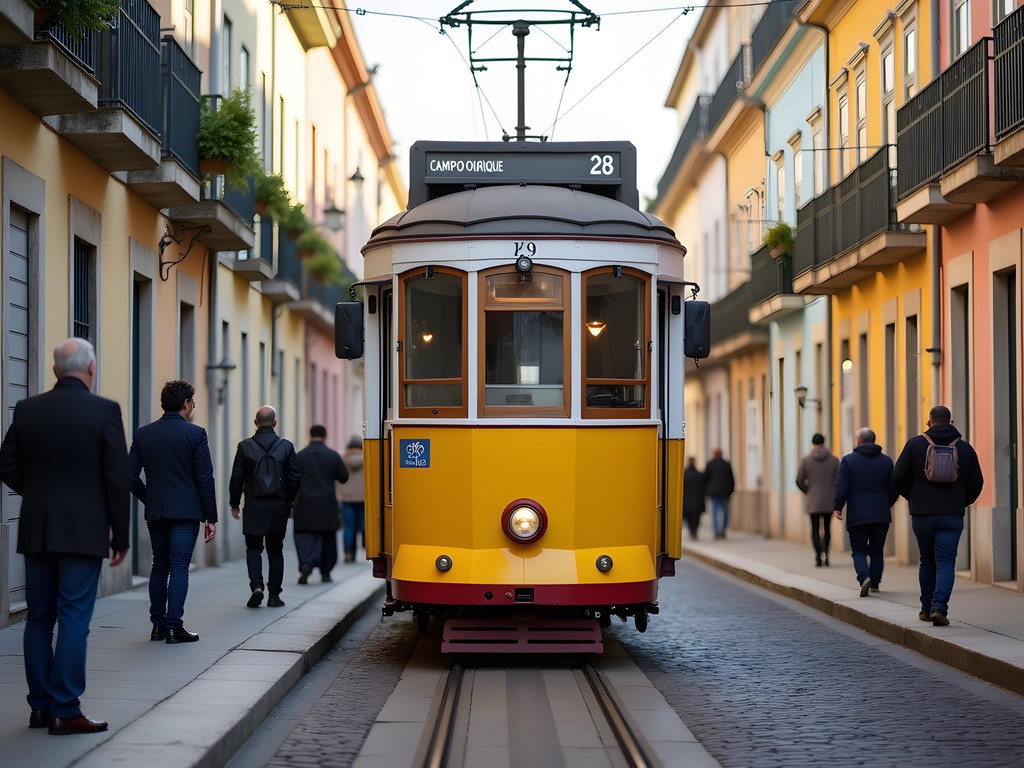
💡 Pro Tips
- Board Tram 28 at Prazeres or Campo Ourique stops to avoid the worst crowds
- Ride early morning (before 8am) or during dinner time (8-10pm) for a less crowded experience
- Keep your transit card handy as inspectors frequently check for tickets on this popular route
Funiculars: Lisbon's Diagonal Time Machines
Lisbon's three historic funiculars—Glória, Bica, and Lavra—are essentially diagonal elevators designed to tackle some of the city's steepest streets. Dating back to the late 19th century, these water counterweight-powered trams (now electrified) are both practical transportation and living museums.
The Ascensor da Glória connects downtown Restauradores Square with the Bairro Alto district and the spectacular São Pedro de Alcântara viewpoint. During my first visit, I made the rookie mistake of attempting to walk up this hill in midday heat. By the time I reached the top, my shirt was soaked through and I looked like I'd just completed an extreme gaming marathon. On my return trip, I wisely paid the €3.80 round-trip fare (or free with the 24-hour pass) and enjoyed the short but steep ride.
The Ascensor da Bica is arguably the most photogenic of the three, cutting through a narrow residential street with laundry often hanging from balconies above. It connects the riverfront area to the Bica neighborhood. This funicular appears on countless Lisbon postcards, but what they don't show is how practical it is for accessing some amazing hidden restaurants away from the tourist zones.
The Ascensor do Lavra is the oldest and least used by tourists, making it my personal favorite. Built in 1884, it connects Câmara Pestana street with São Sebastião da Pedreira. I discovered this gem by accident while exploring with my compact binoculars, which I'd brought for birdwatching along the Tagus River. These lightweight binoculars have become an unexpected urban exploration tool, perfect for spotting architectural details and street art from viewpoints throughout the city.
What makes these funiculars special isn't just their historical significance but how seamlessly they integrate into daily life. You'll ride alongside locals carrying groceries and children returning from school—a reminder that what feels novel to us is simply everyday transportation for Lisboetas.

💡 Pro Tips
- Funiculars are included in the 24-hour transit pass, otherwise expect to pay €3.80 round-trip
- The Lavra funicular typically has the shortest lines and operates 7:50am-7:55pm
- For the best photos of the Bica funicular, position yourself at the bottom of the track on Rua de São Paulo
Secret Elevators: Lisbon's Hidden Vertical Shortcuts
While the trams and funiculars get all the attention, Lisbon's network of public elevators (elevadores) are the true hidden gems of the city's transportation system. These vertical lifts connect neighborhoods at different elevations, saving you hundreds of steps and offering some surprising architectural delights.
The Santa Justa Elevator is the most famous and, frankly, the least secret. This neo-Gothic iron structure designed by a student of Gustave Eiffel (yes, that Eiffel) connects downtown Baixa to Carmo Square in the Chiado district. While tourists queue for up to an hour to ride it and access the viewing platform, I discovered a local hack: you can access the top platform for free by entering through the back from Largo do Carmo. You'll still need to pay a small fee (around €1.50) to climb to the very top viewpoint, but you'll skip the main elevator queue entirely.
Far more interesting to me are the lesser-known municipal elevators hidden throughout the city. The Elevador Castelo connects Rua dos Fanqueiros with São Cristóvão, saving a punishing uphill climb toward the castle. When I stumbled upon it, it felt like discovering a secret warp zone in a video game—suddenly I was transported up several stories without breaking a sweat.
My absolute favorite is the Elevador da Bica (not to be confused with the funicular of the same name). This unassuming elevator is tucked inside what appears to be a regular building near the Time Out Market. It connects the riverfront area with the Bica neighborhood above, emerging near charming cafés where I spent hours working remotely on my travel laptop. The ability to set up my mobile office at these hidden hilltop cafés with spectacular views made my workdays feel like vacation.
The most recent addition to Lisbon's elevator network is the Elevador da Baixa, connecting Rua da Madalena to the Largo Chão do Loureiro. This modern glass elevator is built right into the city walls and provides a convenient connection to the atmospheric Mouraria neighborhood.
What makes these elevators special isn't just the convenience—it's the way they transform your understanding of the city's layout. Lisbon becomes a multi-level game world where these vertical portals create shortcuts between areas that seem disconnected on a traditional map.
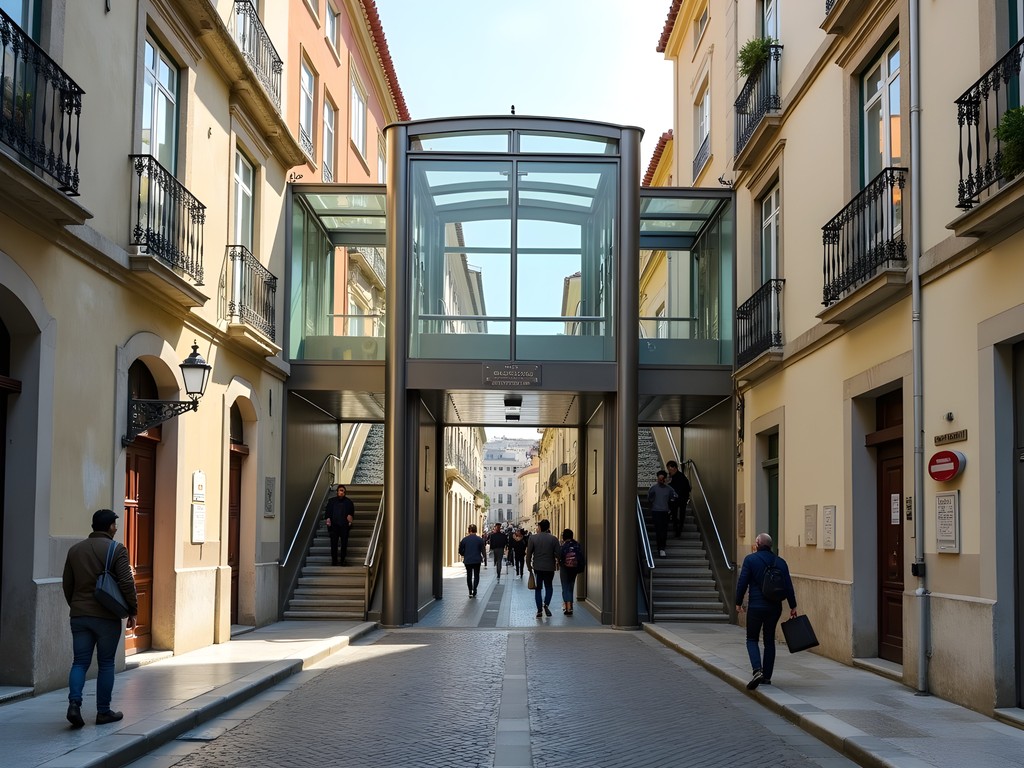
💡 Pro Tips
- Most municipal elevators are free to use and integrated into the public transit system
- The Santa Justa Elevator operates from 7:30am to 11pm (9pm in winter) but is best visited early morning to avoid crowds
- Look for elevator signs (often just a simple 'E' on city maps) to discover these hidden shortcuts
Creating Your Own Budget-Friendly Transit Adventure
After three visits to Lisbon, I've transformed my approach from seeing transit as merely functional to viewing it as an integral part of the experience. I now plan entire days around these unique transportation options, creating what I call "transit adventures" that are both budget-friendly and uniquely Lisboetan.
Here's my perfect day using Lisbon's transit network:
I start early, grabbing a pastéis de nata and coffee before catching Tram 28 from Campo Ourique around 8am when it's still relatively empty. I ride it all the way to Graça, enjoying the sunrise views over the city. From there, I walk downhill (always plan your walking segments downhill!) to Alfama, exploring the narrow streets until I reach the cathedral.
When my legs need a break, I catch a regular bus to Cais do Sodré, where I use the hidden Bica elevator to ascend to a small café for lunch. After refueling, I walk to the Bica funicular and ride it to the top, then stroll through Bairro Alto toward the Santa Justa Elevator, accessing it from the back entrance at Carmo Square.
In the afternoon, I take the metro to Parque station to visit the Gulbenkian Museum, then return downtown via the efficient subway system. As evening approaches, I ride the Glória funicular up to São Pedro de Alcântara for sunset views before dinner in Príncipe Real.
This entire day of exploration costs just €6.60 with a 24-hour transit pass, proving you don't need expensive tour buses to experience the best of Lisbon. I track all my transit adventures using my fitness tracker, which has become an essential travel companion. It helps me monitor my daily steps (still substantial despite the transit help!) and track my sleep patterns as I adjust to new time zones.
The beauty of this approach is that you're not just saving money and energy—you're experiencing the city as it was designed to be navigated. Each tram, funicular, and elevator offers a window into how Lisboetas have ingeniously adapted to their hilly terrain for generations.
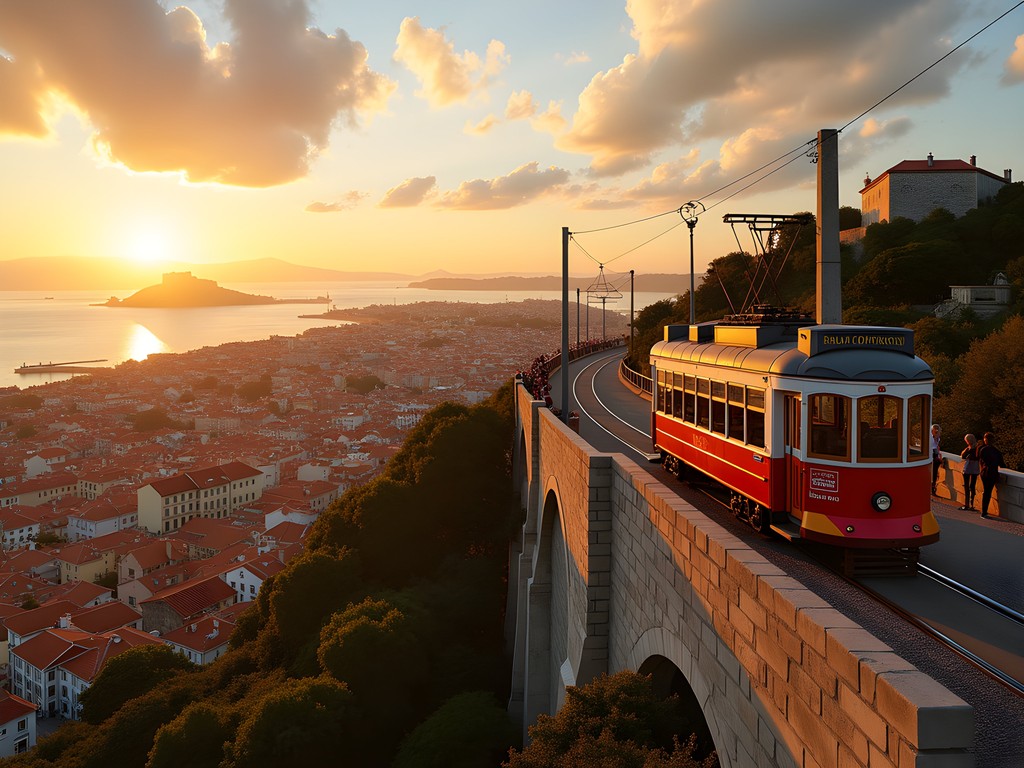
💡 Pro Tips
- Purchase the Lisboa Card if you plan to visit multiple museums along with using public transit
- Combine transit with walking downhill for the most efficient (and knee-friendly) exploration strategy
- Use transit as destination-hopping rather than trying to walk between major sights
Final Thoughts
Mastering Lisbon's unique transportation network transforms what could be an exhausting uphill battle into an exhilarating urban adventure. As a game developer, I can't help but see parallels between navigating this city and designing a well-balanced game level—there are challenges, shortcuts, and hidden paths that reward the curious explorer. The combination of historic trams, funiculars, and secret elevators creates a transit system that's not just practical but an attraction in itself. Whether you're visiting for a weekend or settling in for a longer stay, embracing these hill-conquering options will save your energy for what really matters: experiencing the rich culture, food, and views that make Lisbon one of Europe's most captivating capitals. So grab your Viva Viagem card, download a good transit app, and prepare to level up your Lisbon adventure—your calves will thank you!
✨ Key Takeaways
- Purchase a 24-hour Viva Viagem pass for unlimited access to all transit options
- Ride Tram 28 early morning or from end stops to avoid tourist crowds
- Use municipal elevators as free shortcuts between different elevation neighborhoods
- Combine downhill walking with uphill transit for the most efficient exploration
📋 Practical Information
Best Time to Visit
year-round, though spring (April-June) and fall (September-October) offer ideal temperatures and fewer crowds
Budget Estimate
€10-15/day for transportation (including 24-hour pass at €6.60)
Recommended Duration
2-3 days to fully explore using public transit
Difficulty Level
Easy With Transit, Challenging On Foot

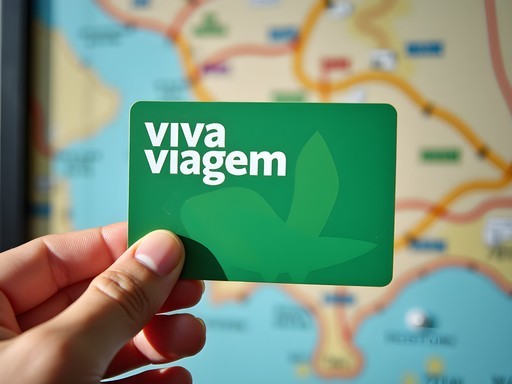








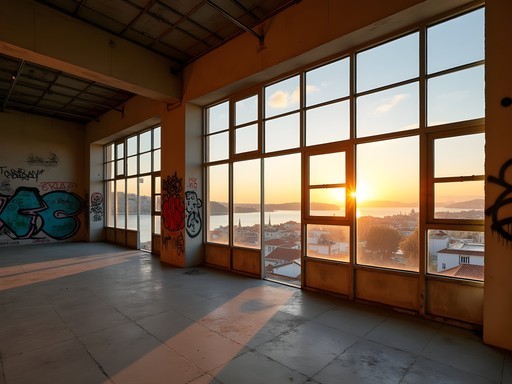
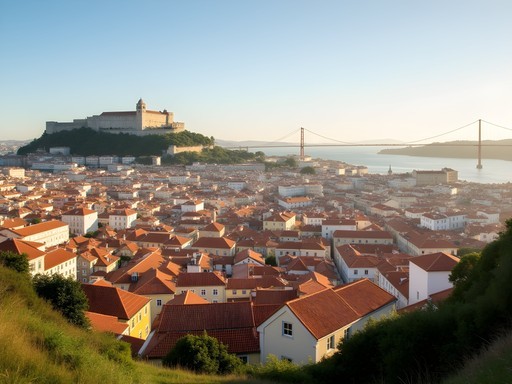


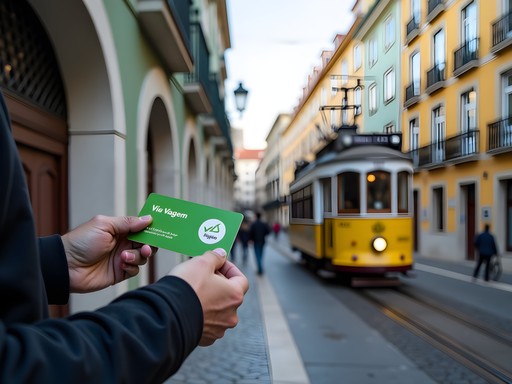
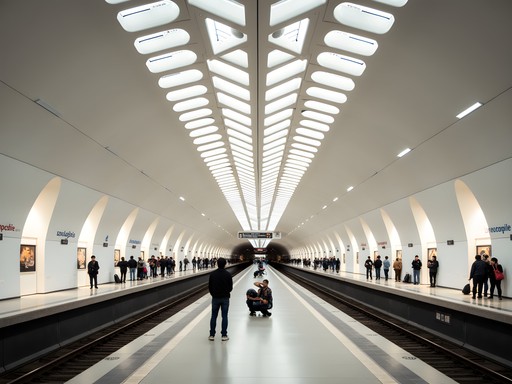
Comments
backpackguy
Love that shot of the yellow tram against the blue tiles! Perfect Lisbon vibes.
cityperson
Just booked Lisbon for May! Saving this post for later!
Frank Garcia
Excellent breakdown of Lisbon's vertical transport options! I'm heading there next month to update my own guide. Did you find any particular time of day when the Elevador de Santa Justa had shorter queues? The last time I visited, the wait times were prohibitive even in shoulder season. Also curious if you encountered any accessibility issues with the older funiculars that might be worth noting for travelers with mobility concerns.
Bella Pierce
Thanks Frank! For Santa Justa, I found early morning (before 9am) or later evening (after 7pm) had the shortest waits. As for accessibility, you're right to be concerned - most of the historic funiculars aren't wheelchair friendly, though Elevador do Lavra has made some improvements recently. I should definitely add an accessibility section to the guide!
moonwalker
Pro tip: I downloaded the Moovit app before my Lisbon trip and it was super helpful for navigating all these different transport options. It shows you exactly which tram/bus/elevator to take and walking directions between them. Saved me from climbing so many unnecessary hills! Also, I found the 24-hour transit pass to be totally worth it since we hopped on and off trams all day. I used my foldable water bottle constantly during all that walking - essential for Lisbon's hills!
backpackguy
Is Moovit better than Google Maps for Lisbon?
moonwalker
100% yes! Google Maps doesn't show all the funiculars and elevators. Moovit includes everything including the secret shortcuts.
escapeninja
Just got back from Lisbon and can confirm - Tram 28 is a tourist trap nightmare! We tried 3 times and the queues were ridiculous. Eventually took your advice and rode it starting from Martim Moniz at 8:30am on a Tuesday. Way less crowded! Also discovered those free public elevators in the shopping centers you mentioned - absolute lifesavers when your legs are burning from all those cobblestone hills. We found a cool local cafe near the Ascensor do Lavra called Fabrica Coffee Roasters that made the perfect pit stop between climbs. Highly recommend!
Gregory Boyd
Having visited Lisbon annually for the past decade, I can confirm this is one of the most comprehensive guides to the city's vertical transport network I've encountered. One additional tip I'd offer: purchase the 24-hour transit pass (€6.60) rather than individual tickets if you plan to use multiple forms of transport. The Ascensor da Bica is particularly worth experiencing at sunset for spectacular views over the Tagus River. For those with mobility concerns, I'd suggest staying in the Baixa district, which is relatively flat compared to other neighborhoods.
cityperson
Thanks for the Baixa tip! I'm traveling with my elderly parents next spring and was worried about the hills.
globetime2115
Those hills are no joke! Wish I'd seen this before my trip last summer!
wanderhero
This post literally saved my trip to Lisbon last month! Those secret elevators are GAME CHANGERS! We used the Elevador do Lavra when our Airbnb ended up being at the top of a killer hill. My girlfriend was ready to book a new hotel until we found this hidden gem. The locals all use them and barely any tourists know about them. Bella, you're the real MVP for mapping these out!
backpackguy
Which elevator was the least crowded? Going next week!
wanderhero
Definitely Elevador do Lavra! Most tourists are fighting for Tram 28 while locals use these shortcuts. We never waited more than 2 minutes.
FirstTimeEurope
Really cool! Going there next month, any other tips?
backpackking
Not the author but I'd recommend wearing REALLY comfortable shoes even with all these transportation options. And try to get your accommodation in Baixa or Chiado if possible - more central and flatter!
dreamwalker
Just used this guide on my trip last week and it was a lifesaver! The tip about riding Tram 28 from Campo Ourique instead of the main terminal was genius - no line at all and we got seats right away. Those funiculars are so charming too, felt like stepping back in time. My calves thank you, Bella!
Venture X
Premium card with 2X miles, $300 travel credit, Priority Pass